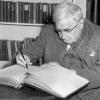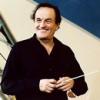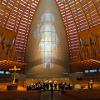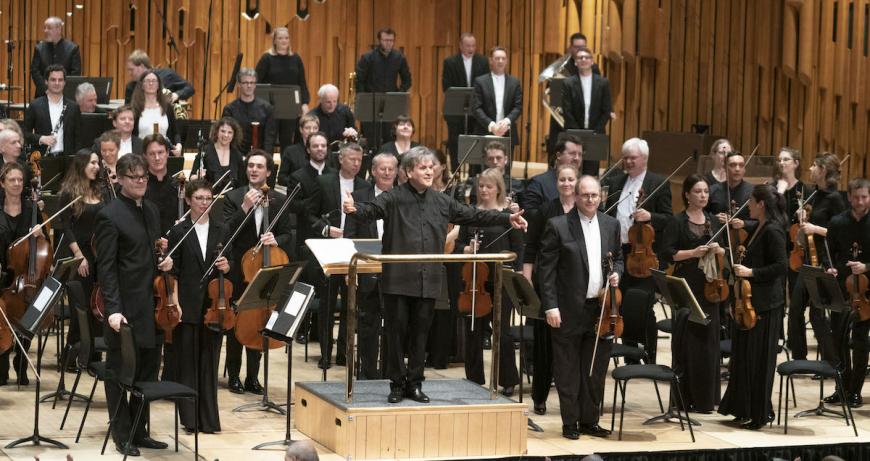
Somebody should underline British music of the 20th century on the ever-growing list of music that ought to be explored and played in America. If it weren’t for recordings — of which thankfully there are plenty — I would never have known the nine symphonies of Ralph Vaughan Williams, nor the nine symphonies of Malcolm Arnold, nor works by Gustav Holst other than The Planets, nor the music of Frederick Delius, William Walton, Michael Tippett, Havergal Brian, and Frank Bridge, among other figures who deserve slots in concert life here. True, there was a Benjamin Britten renaissance during his centennial year in 2013 — nowhere more so than in Los Angeles — but since then, he has been mostly put back on the shelf of Brits who allegedly don’t travel well outside of their island in the North Atlantic.
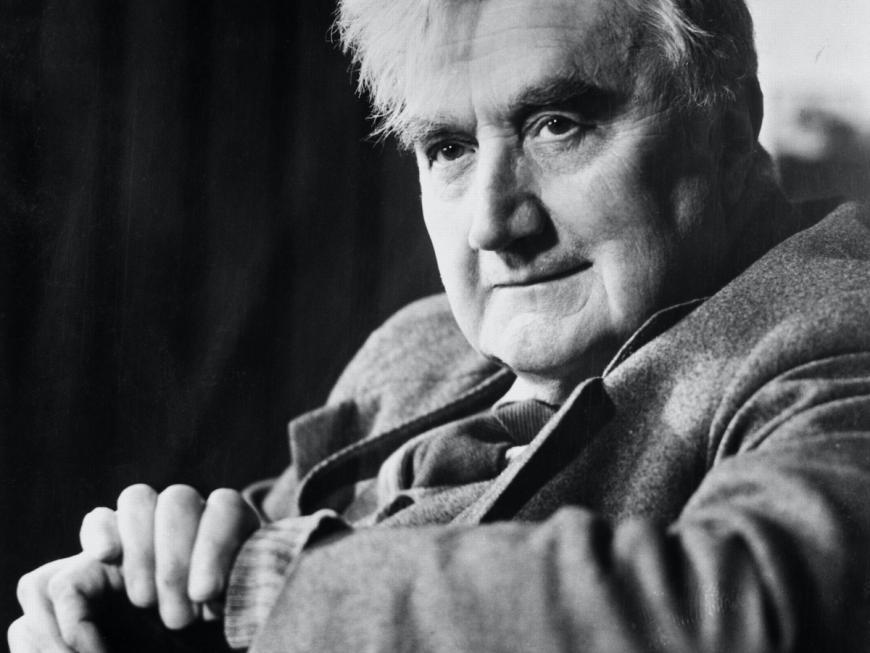
One who should have wider global appeal is Vaughan Williams, whose later music broke out of a perceived straitjacket of pastoral English folk song into something more universal and disturbing in its meaning and message. The breakout piece was his Symphony No. 4, a work of violence, turmoil, and brooding unease written in 1935 and thought to be a premonition of the world war to come — which the composer heatedly denied while admitting, “I don’t know if I like it, but it’s what I meant!”
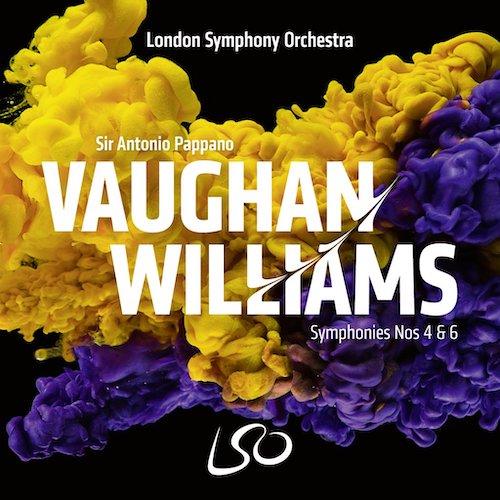
Following his transcendent Symphony No. 5, where the unease can be felt underneath the serenely meditative surfaces, Vaughan Williams picked up right where he left the Fourth in the Symphony No. 6 — completed in 1947 after the war was over and two atomic bombs had been dropped. Three movements of virulence and foreboding are capped by an astonishingly bleak Epilogue, played pianissimo all the way through. Given the context, you can’t help but feel that this finale was an audio portrait of a wasted planet after a nuclear war — an impression which the composer again denied, but it’s OK not to take his word for it.
So it’s a natural move to combine the Symphonies Nos. 4 and 6 onto a single disc — which Antonio Pappano, a newcomer to Vaughan Williams on recordings, has done with the London Symphony Orchestra on a new SACD (LSO Live). Pappano gets an adequate amount of vehemence in the first movement of the Symphony No. 4, but a veteran like Adrian Boult — who led the world premiere — really makes it bite and snarl in his mono and stereo recordings — the stereo one especially (EMI, now Warner). Or VW himself, leading a frantically ornery performance from the 78 RPM era (YouTube). Later on in the churning Finale, Pappano is able to screw the tension tighter and tighter and give you an idea of this symphony’s ferocious power.
Pappano is able to take the measure of the Symphony No. 6 to a greater degree; there is more tension in the first and third movements and the insistent, three-note knocking-on-the- door motif of the second movement has sufficient menace. Yet it’s in the Epilogue that Pappano makes his most compelling case, getting the LSO to play at the most hushed pianissimo (actually a pianississimo) and slowest tempo that I’ve heard since the 1953 mono Boult LP, (Decca), which was recorded in VW’s presence. The wasteland has never been more chillingly evoked on a modern recording — and there may have been additional incentive to get it to sound this way, for Pappano’s performance was recorded live literally on the night before the COVID pandemic shut down all concert life in Britain (Mar. 15, 2020). Pappano writes that they knew the end was coming as they played, the music fading, as in real life, to a dead silence. Don’t tell me that this score can’t travel across boundaries and oceans.
The sound the engineers got in the troublesome Barbican is more resonant and livelier than usual from this source, especially when heard in SACD surround. And just before the disc’s release, Pappano was named chief conductor of the LSO to succeed Simon Rattle in 2024, making this release a harbinger of a productive relationship to come.
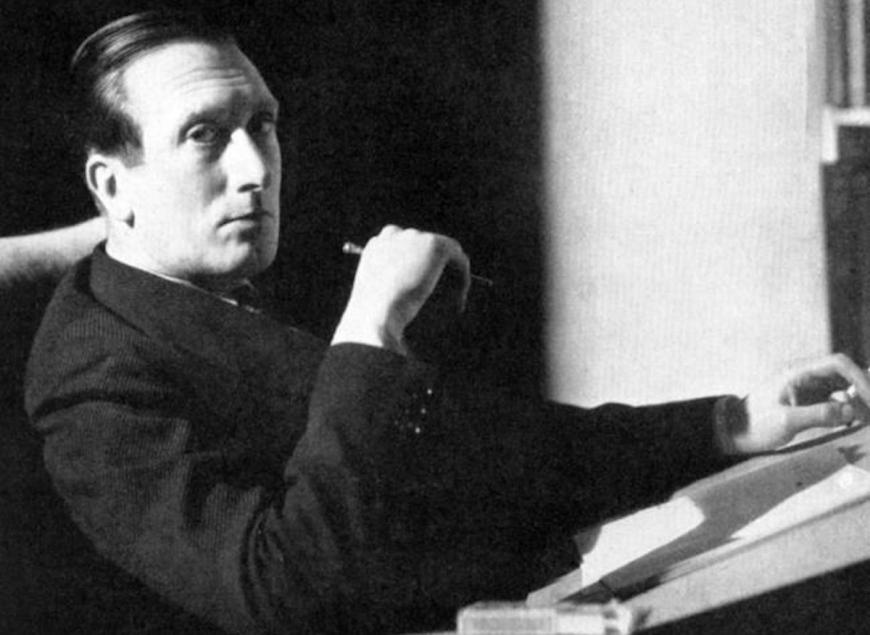
Then we have the case of William Walton, who is even more marginalized in this country than Vaughan Williams. He, like VW, was cast aside by the serialists who bossed contemporary music after World War II, despite having crashed onto the scene before the war as a brash young satirist with Facade and then as a passionate symphonist with a biting, brilliant sound of his own.
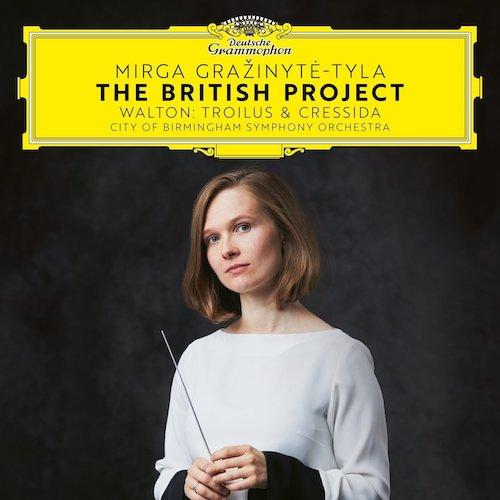
Walton’s big moment in the 1950s came with Troilus And Cressida, a full-blown grand opera set during the Greek-Trojan War. Conceived as a competitive response to the success of Britten’s Peter Grimes, seven years in the gestation, it got a splashy world premiere at Covent Garden in 1954, and San Francisco Opera landed the U.S. premiere the following year. But the critical consensus was lukewarm and the initial attention soon vanished, for Walton’s attempt to write a Romantic opera with his usual colors was considered hopelessly out of touch with then-fashionable trends. Walton himself conducted a splendid single LP of scenes from the opera — with Elisabeth Schwarzkopf as Cressida — soon after the premiere, and that was all one could hear until a full recording, albeit with a few cuts and downward transpositions made by the composer, came out in 1977 (both on EMI). There has been only one other recording since.
Now Mirga Grazinyté-Tyla, who recently announced she was stepping down from her recently acquired post at the City of Birmingham Symphony Orchestra, has taken up the cause with a digital-only recording with the CBSO of a four-movement suite from Troilus stitched together some years ago by Christopher Palmer (Deutsche Grammophon). In a little over half an hour, Mirga gives a ravishing idea — albeit without voices — of some of the best parts of the score.
The first movement, “The Trojans,” sets the scene with warlike passages and exquisite lyrical, perfumed ideas. A gentle Scherzo contains a portrait of Pandarus — Cressida’s uncle, the enabler of the Troilus/Cressida romance, and the only character in the drama that can be remotely described as comic — and the most prominent aria of the opera, “At the haunted end of the day.”
The third movement is the Act II love scene which is bathed in Walton’s ripe, unique sonorities — the musical high point of the opera. That leads to an orchestral interlude depicting a thunderstorm which owes a lot in sound to the storm interlude in Peter Grimes, though Walton described it in a letter as “a pornographic interlude” (holy, Tristan!). And the Finale takes us from some ceremonial music to the suicide scene at the end of the opera. It amounts to a cogent four-movement symphony that makes one want to hear more from this neglected opera.
The Walton is the second in a series of Grazinyté-Tyla downloads and streams with the overall title “The British Project;” Britten’s Sinfonia da Requiem was released last October and Tippett’s A Child of Our Time is in the can. A two-CD set was supposed to have come out in March, but has yet to emerge.


